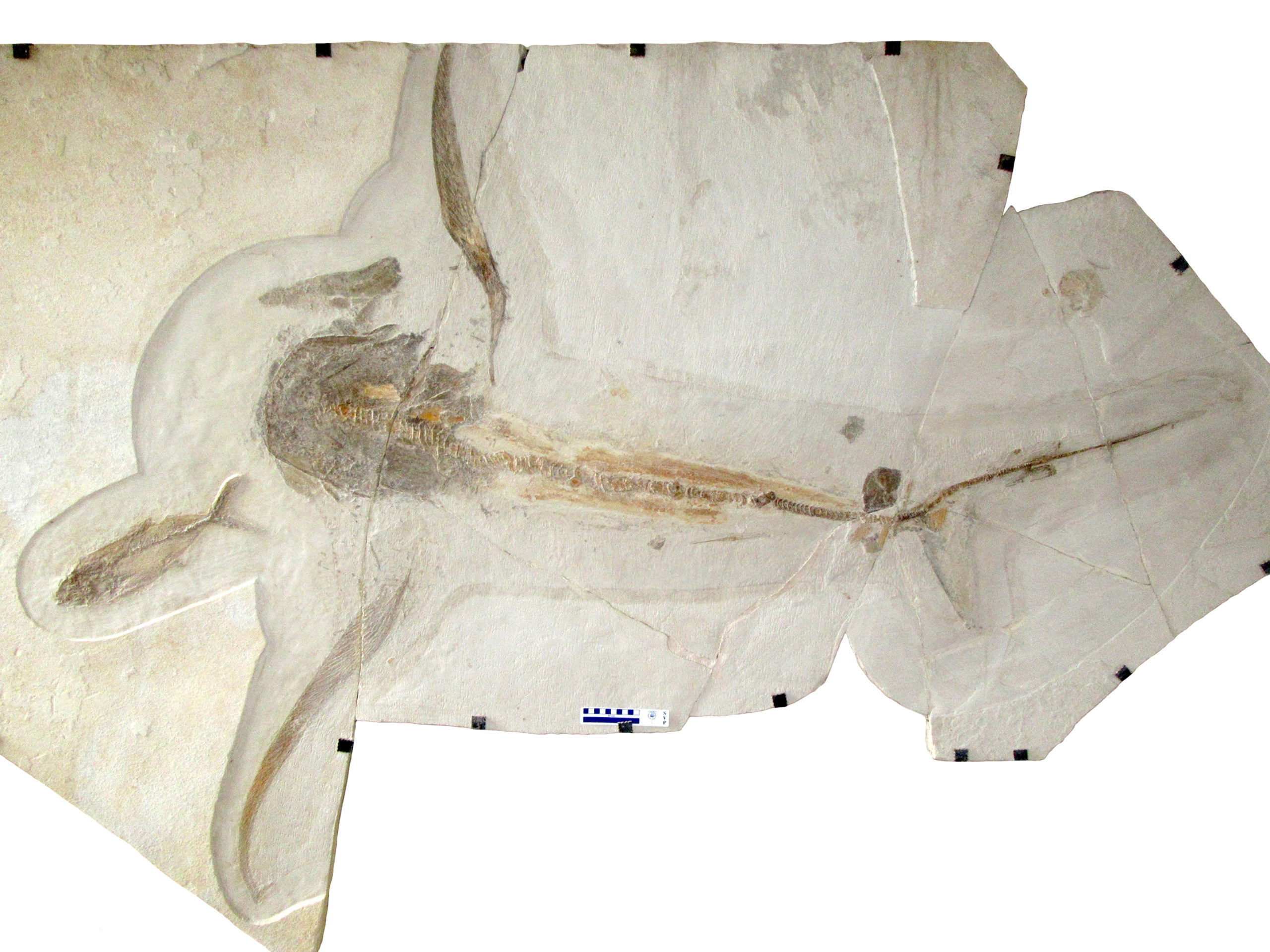Paleontologists have announced the discovery of an extraordinary fossil shark in Mexico. They describe Aquilolamna milarcae, a Late Cretaceous shark that was wider than it was long, with an oddly slender pair of pectoral fins. This shark, far from a ferocious biter, may have survived by eating plankton.
The team’s research was published today in Science. The authors believe A. milarcae was a lamniform, the same order that today includes the great white and megamouth shark. But the Cretaceous shark looked totally different, with the wide mouth, flat head, and 1.83 metre wingspan reminiscent of rays. Though rays are also elasmobranches, the group of cartilaginous fish that also contains sharks and skates, A. milarcae precedes the appearance of its lookalikes, manta and devil rays, by some 30 million years.
“Aquilolamna is a shark; definitively, there’s no problem,” said Romain Vullo, a paleontologist at the University of Rennes in France and lead author of the paper, in a video call. “This lineage of sharks became extinct at the end of the Cretaceous without descendants. After that, the ecological niche became vacant, and then, a lineage of batoids — rays — evolved towards manta rays.”

Vullo described the shark as a languid predator, which, like all other sharks, would’ve used its tail fin to propel itself through the shallow sea that once occupied central North America. (That’s another difference from rays, which undulate their winglike fins to get from A to B.) After propelling itself, A. milarcae would have used those remarkable pectoral fins to do the marine equivalent of hang-gliding, coasting through the seas and, perhaps, gobbling up plankton that got in its way.
“This is indeed an exciting discovery,” Kenshu Shimada, a professor of paleobiology at DePaul University in Chicago and an expert in ancient shark species, said in an email. “The exact taxonomic identity of this new shark is still questionable, but its body design, particularly its exceptionally elongated paired pectoral fins, is unique not only within the shark order Lamniformes, but also in the entire shark world.”
It’s not certain that the shark was planktivorous, but that’s the hypothesis of Vullo and his team, based on the fact that the fossil had no teeth. That’s surprising, because most ancient sharks are identified solely by their teeth, as those preserve better than the cartilaginous skin and skeleton. The team raises the possibility that A. milarcae is either a relative of or the same animal as Cretomanta, another elasmobranch that is only identified so far by its dentition.
“When you work on a single specimen, even if it is very well preserved, you always miss some information, and here, the main information we miss is the dentition,” Vullo said. “This is what I’d like to answer: What was the dentition of Aquilolamna, and check if it is, indeed, Cretomanta.”
It’s a Cretaceous take on Guess Who?, where instead of eliminating candidates for the fossil sharks, more are coming to the surface. While that would be a bane to one playing the game, it’s a boon to paleontologists, who continue to learn more about the biodiversity of Earth’s prehistoric seas.
